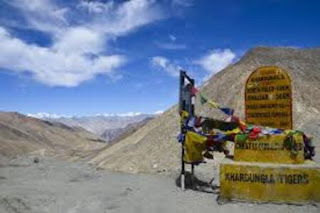Nestled in the serene landscapes of
Ladakh, Khardong Monastery stands as a testament to the rich cultural heritage
and spiritual depth of the region. Established centuries ago, this monastery
holds a pivotal place in the religious and social fabric of Ladakhi society. Constructed in the 12th century, Khardong
monastery is located in Lahul and Spiti district, Himachal Pradesh. It
is renowned as an archetypal Lahul and Spiti architectural wonder.
History:
Khardong Monastery, also known as Khardong Gompa, traces
its origins back to the 17th century when it was founded by Lama Sherab Zangpo.
Initially built as a small retreat, it gradually expanded to become a center of
Buddhist learning and practice in the region. Over the years, it has weathered
various challenges, including natural calamities and periods of political
instability, yet it has persevered as a spiritual sanctuary for monks and
visitors alike.
Methodology:
The monastery follows the Gelugpa tradition of Tibetan Buddhism,
which emphasizes rigorous study of Buddhist scriptures, meditation practices,
and adherence to monastic discipline. Monks at Khardong dedicate themselves to
a life of contemplation and service, engaging in daily rituals that include
prayers, chanting, and ceremonies. Meditation is central to their routine,
fostering inner peace and spiritual growth.
Types:
Khardong Monastery serves as both a monastic institution
and a center for community engagement. Within its walls, there are different
types of practitioners ranging from novices to accomplished scholars and
meditation masters. The monastery also welcomes lay practitioners and tourists,
offering them a glimpse into Buddhist philosophy and practice through guided
tours and participation in daily rituals.
Today, Khardong Monastery continues to uphold its legacy
as a spiritual beacon in the Himalayan region. Its whitewashed walls, adorned
with colorful prayer flags fluttering in the wind, symbolize peace and
enlightenment. Visitors to this sacred place not only witness breathtaking
vistas of Ladakh's rugged terrain but also experience the profound tranquility
that emanates from centuries of spiritual devotion.
In conclusion, Khardong
Monastery stands not only as a physical structure but as a living
testament to the enduring power of Buddhist teachings in shaping the cultural
and spiritual landscape of Ladakh. It serves as a reminder of the importance of
preserving and cherishing ancient traditions in an ever-changing world.

No comments:
Post a Comment